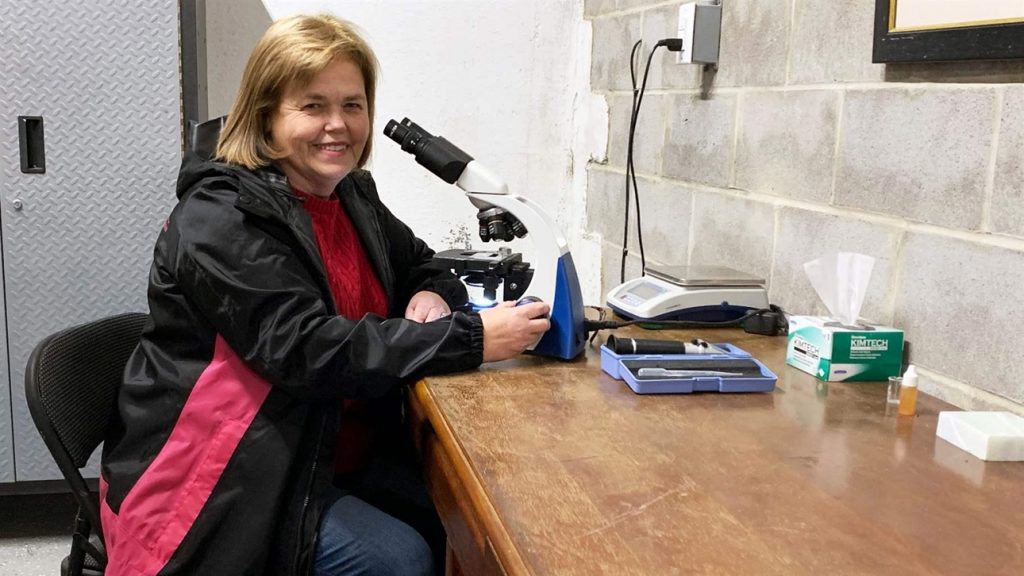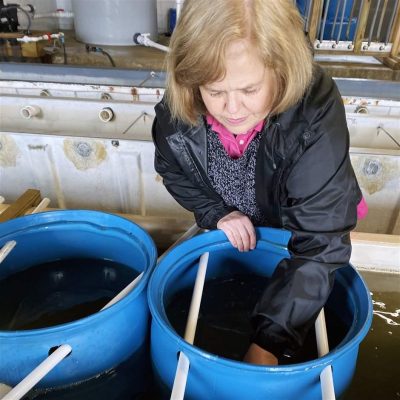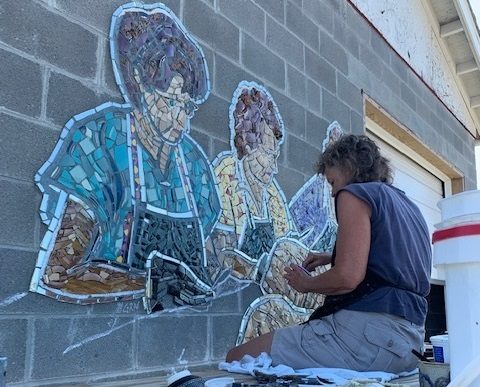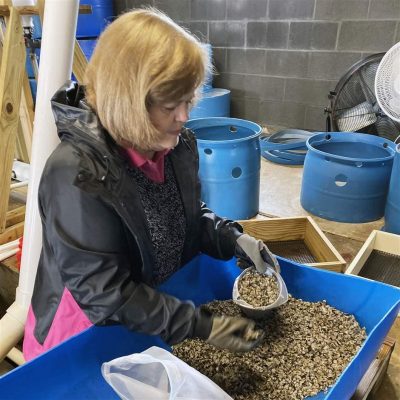
This Q&A was first published Jan. 7 by The Pew Charitable Trusts. Coastal Review Online is reprinting this article as a followup to an original report in August 2018, just weeks after nursery operations began and less than a month before Hurricane Florence struck the coast, a temporary but significant setback for the business.
Like many states on the East Coast, North Carolina had a thriving wild oyster population until the mid-20th century when overharvesting, water pollution and habitat destruction began to take their toll. But in recent years, an oyster-farming movement has sparked economic and ecological benefits — and hope for wild oysters.
Supporter Spotlight
The Pew Charitable Trusts is working with partners in the state to advance oyster recovery, which can improve habitat and water quality, and protect shorelines from storms. To learn more, Pew spoke with Susan Hill, co-owner of Down East Mariculture, an oyster nursery on Jarrett Bay in Carteret County. This interview has been edited for clarity and length.
Q: What’s involved in growing oysters?
A: I usually order about 3 to 5 million oyster larvae from a hatchery in Virginia, and they arrive as a little black ball, about the size of a golf ball. Each larva is smaller than a grain of sand. We look at them under a microscope to make sure they’re alive and moving around. Since they’ve been refrigerated, it takes a little while for them to wake up.
We acclimate the larvae to the temperature and salinity of our larvae tanks, and then add them to the silos — barrels with screens in the bottom –with the goal of having each larva attach to one piece of micro cultch, ground up oyster shell that we spread on the screens. The average set rate is about 20 percent, so with 1 million larvae you’ll end up with about 200,000 spat—the name for tiny oysters. Twice a day, I feed them algae and very gently wash them; it’s like having little babies!
When they’re big enough, we move the larvae to our upwelling tanks, which allows them to feed on the algae and nutrients in the unfiltered bay water. After about six to eight weeks, they’re ready to hand off to fishermen who place them in bags or cages in the bay, and then do a lot of rotating, sorting, and thinning to help them grow. In another nine to 14 months, the oysters are ready for market.

Q: What made you decide to create an oyster nursery here?
A: When I was growing up here, the Willis Brothers’ Seafood building, what we used to just call Elmer’s clam house, was the center of business for eastern Carteret County, and an anchor for the community. After Elmer’s death in 1977, the building changed hands a few times and eventually became a dilapidated eyesore. The building was back on the market in 2015, and after three attempts, I finally had a contract. But I had no idea what to do with the building. I wanted to help the people and economy here and I learned that oyster farmers in North Carolina were having difficulty getting seed. My dad was a diesel engineer and commercial fisherman and, knowing how difficult that is, I really wanted to help the local fishermen do what they love. So my husband Robert and I decided on an oyster nursery.
Supporter Spotlight
When I began college in 1970, my plan was to be a marine biologist. However, I was diagnosed with type 1 diabetes in 1971 and really couldn’t be out on the water. We didn’t even have glucose monitors back then. So I majored in biology and chemistry. And now, at 67, I’m getting to do what I wanted to do as a kid. And my son, John, and his wife, Adrianna, are our business partners. So, this is truly a family-owned and -operated business.
Q: It sounds like you have a strong connection to the history here
A: Yes, I remember fishermen unloading their catch on the docks behind the clam house. Women would shuck clams and scallops from early morning to early evening. I’ve often heard that in the 1940s, 5,000 gallons of clams were shipped out every week, trucked all over the country.
When we bought the building, I wanted to do something to honor the rich fishing heritage of our community. One idea I had was a mural. Then I met LaNelle (Davis), a mosaic artist, who recreated a photograph from the 1950s of women shucking clams here. To make the mosaic, she used dishes donated by family members of some of the people who worked here and clam shells reclaimed from our property. Folks from all over stop to admire LaNelle’s work. The community has been grateful for us bringing the building back to life and for honoring our heritage with the mural.

Q: What are the benefits of growing oysters?
A: Oysters are filter feeders, constantly cleaning the water and providing a healthier environment for marine life. Oyster reefs create habitats for marine life and help protect the coast from storms. Oyster farming provides local jobs and allows fishermen to continue doing what they love while providing healthy, local food.
Q: What’s going on in North Carolina right now when it comes to oysters?
A: The coast of North Carolina was hit hard by hurricanes Florence and Dorian. I hope people see oysters as a way to help protect the coast. Also, North Carolina is the sixth state in the nation to join the National Shellfish Initiative, run by the National Oceanic and Atmospheric Administration. The initiative prioritizes job creation, protection of water quality, protection of shellfish health, and sustainable management. And a Strategic Mariculture Plan, recently approved by the North Carolina General Assembly, charts a course to increase the state oyster industry from $7.5 million now to $100 million by 2030.
It’s an exciting time to be involved with our community and the growth of the oyster industry. I hope we can make some small contribution to move this worthwhile effort forward.

Photo: Susan Hill







